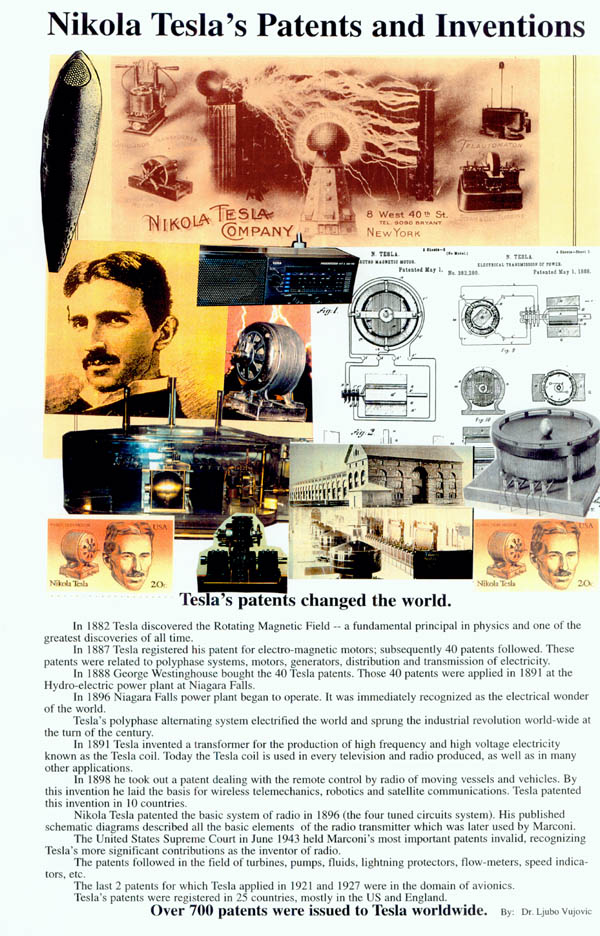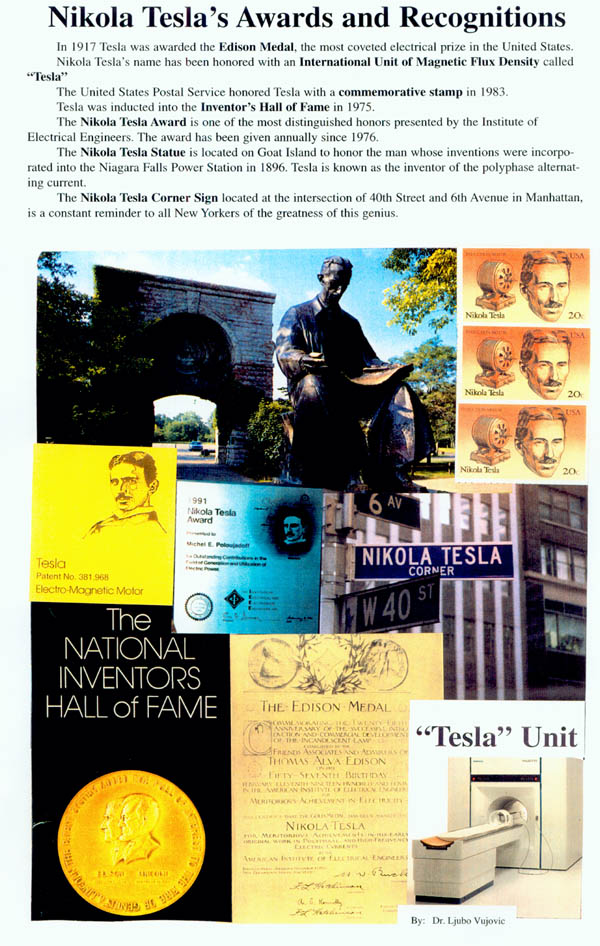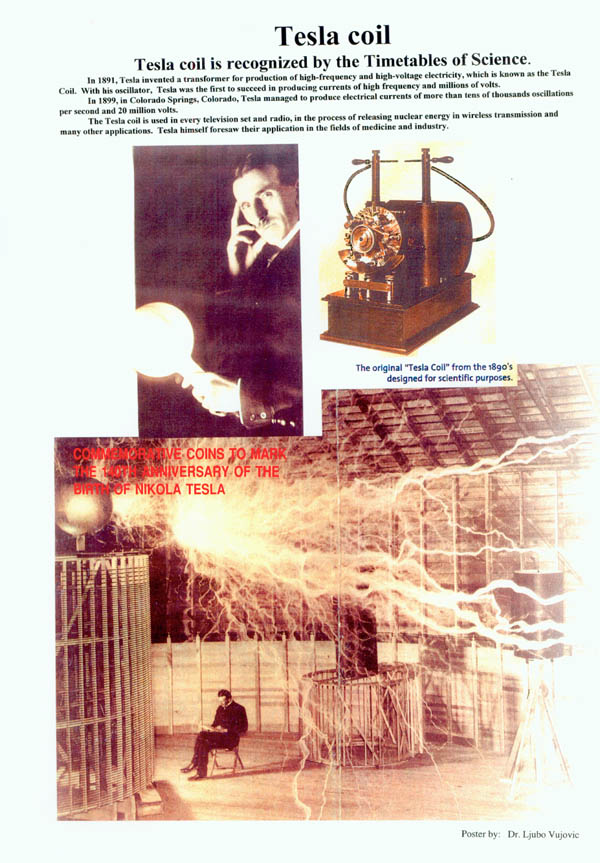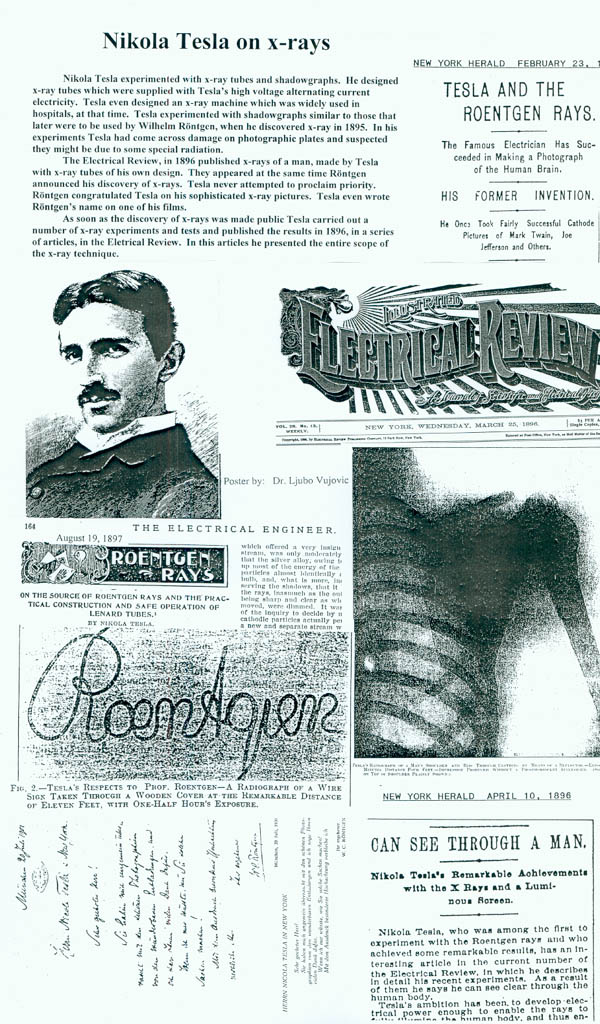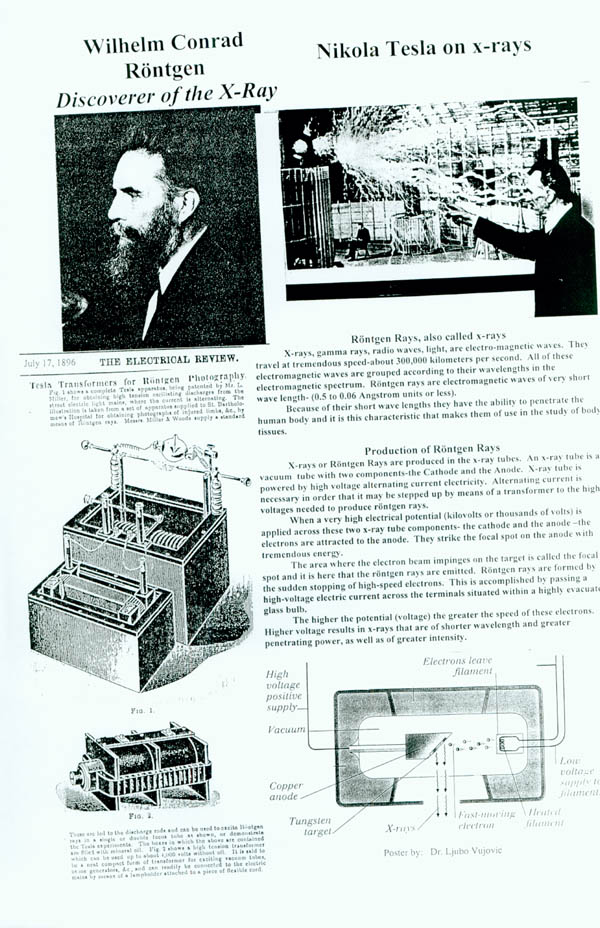
Welcome to the Tesla Memorial Society of New York Website
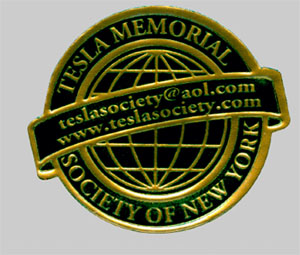
Nikola Tesla (1856-1943) is one of three Americans whose name was honored as an
International Unit
Tesla = Weber/m²
The Tesla (symbol: t) is the SI unit of magnetic flux density.

Above: Nikola Tesla (1856-1943) at the age of 38.
Nikola Tesla (1856-1943) is one of 3 Americans whose name is honored as an International Unit. The other two famous Americans are Joseph Henry (1797-1878) who discovered electromagnetic induction and Enrico Fermi (1901-1954), the Italian American physicist who developed the first nuclear chain reaction. The "Henry" (Symbol H) is the Standard International unit of inductance.

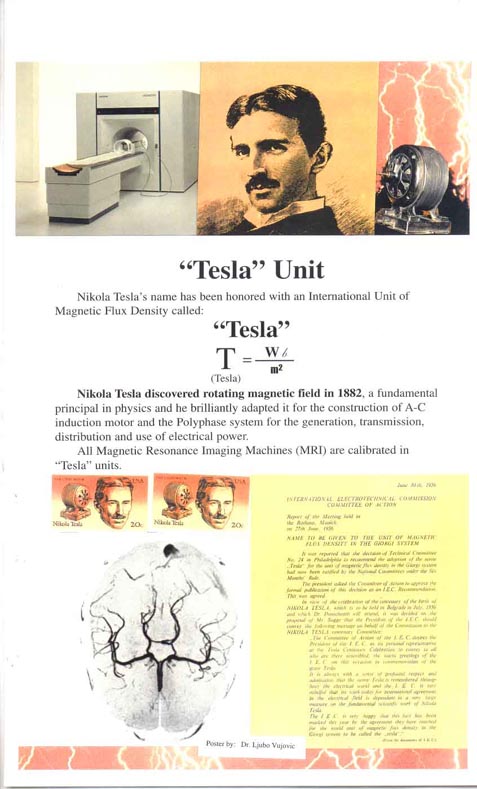
Above: Poster by Dr. Ljubo Vujovic, Secretary General, Tesla Memorial Society of New York.
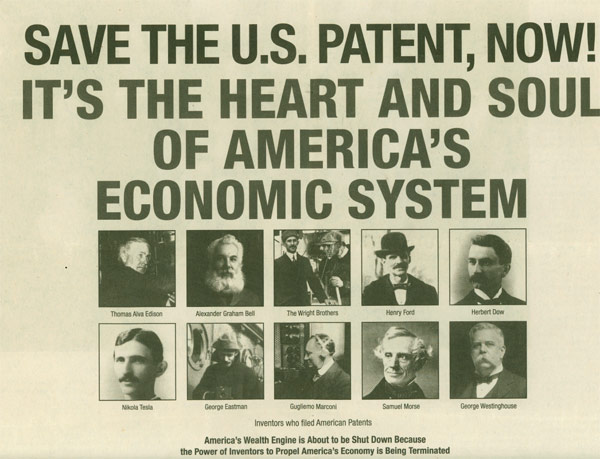
Above: New York Times Ad against the Patent "Reform Act", April 7, 2008. Nikola Tesla is listed with other famous American inventors.
Nikola Tesla's name has been honored with the international unit of magnetic flux density called "Tesla". All magnetic resonance imaging (MRI) machines are calibrated with Tesla Unit (from .2 Tesla to 9 Tesla). MRI machines work on the principle of a homogeneous magnet field. Nikola Tesla discovered the Rotating Magnetic Field in Budapest, 1882. The Tesla Unit for magnetism was established in 1956 in the Rathaus of Munich, Germany by the International Electrotechnical Commission Committee in Action.
Because of the tremendous importance of the MRI technology and widespread use of the MRI machines around the world, which are all calibrated in Tesla Units, Tesla's name connected with the MRI will be known more and more in the future and the years to come.
Magnetic Resonance Imaging (MRI) is extremely important for medical diagnosis of internal organs of the human body, especially the diagnosis of cancer, tumors, degenerative diseases of the brain and spinal cord. The modern diagnosis of the internal organs of the human body would be today unthinkable without MRI. MRI machines are widespread with many variations in size and capacity all around the world. The revenue of MRI machines sales was 1.46 billion dollars in 2002. Revenue for MRI machine sales is expected to increase in the following years.
MRI employs a strong homogeneous magnetic field and specific radio frequency to which many elements, especially hydrogen nuclei respond with radio frequency signals. These signals are analyzed by computer reconstruction algorithms. The healthy tissue and pathological tissue have different radio frequency signals and produce different images on MRI. Therefore enable us to make diagnosis of pathological tissues of the body.
MRI has the advantage over CT scan, it uses no ionizing radiation and does not cause cumulative harm. The only contraindication of those related to the high magnetic field. Magnetic-sensitive objects like pacemakers, watched and magnetic tapes are contraindicated.
A Short History of the MRI (Click here for article)
The henry (symbol: H) is the SI unit of inductance.
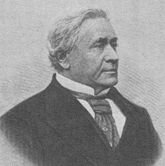
Above: Joseph Henry, the leading American scientist after Benjamin Franklin until Willard Gibbs, was a professor at Princeton from 1832 to 1846. His chief scientific contributions were in the field of electromagnetism, where he discovered the phenomenon of self-inductance. The unit of inductance, called "the henry", immortalizes his name. Henry is also remembered as the first Secretary of the Smithsonian Institution, where he made extraordinary contributions to the organization and development of American science.
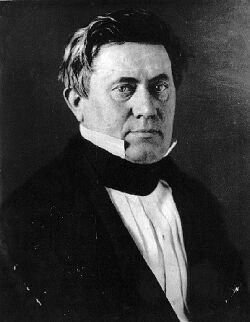
Above: During his remaining years in Princeton Henry continued his electrical investigations, but also branched out into the study of phosphorescence, sound, capillary action, and ballistics. In 1844 he was a member of a committee to investigate the explosion of a gun during a demonstration on the new U.S.S. Princeton; the Secretaries of State and Navy and several congressmen were among the spectators killed. His experiments on gun castings on this committee led him into the subject of the molecular cohesion of matter.
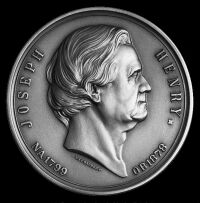
Above: After hearing of Henry's death in May 1878, William Barber, engraver of the U.S. mint, offered to design this medal in honor of Henry. He and his son Charles completed the design the following year and donated the medal to the Smithsonian Institution for "any application that might...be afterwards suggested." Henry's birth date is mistakenly given as 1799, rather than 1797, due to confusion over Henry's age. On the back of the medal is a Latin inscription taken from the Odes of Horace, Book 1, Ode 24: "Incorrupta Fides Nudaque Veritas Quando Ullum Inveniet Parem." The lines from which this inscription is excerpted read, according to one modern translation, "Where then will Justice, and Faith, the sister of Justice, and Decency, and Truth that needs no ornament, find his equal?" In January 1967, the Smithsonian's Board of Regents proposed to use the Henry medal to recognize distinguished service to the institution. Since that time, recipients of the medal have included a Smithsonian secretary, Charles Abbot, an astrophysicist, Fred Whipple, an anthropologist, T. Dale Stewart, and a U.S. vice-president and Smithsonian regent, Hubert H. Humphrey. In 1997, on the occasion of the bicentennial of Henry's birth, the medal was awarded to physicist Frederick Seitz, a long-time supporter of the Henry Papers Project and chair of its advisory committee.
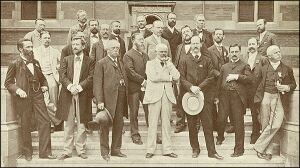
Above: In August 1893, an International Congress of Electricians met in Chicago during the World's Columbian Exposition. Scientists and engineers at the congress adopted names and agreed on definitions for eight units of electrical measure: the ohm, the ampere, the volt, the coulomb, the farad, the joule, the watt, and the henry. The motion to adopt the henry, the only unit named after an American, came from the leader of the French delegation, physicist Éleuthère Élie Nicolas Mascart. The henry was defined as "the induction in a circuit when the electro-motive force induced in this circuit is one international volt, while the inducing current varies at the rate of one ampère per second."
Enrico Fermi (1901-1954)
The Fermi (symbol: fm) is a non-SI unit of length that is internationally recognised and equivalent to the SI-recognised femtometre. The unit was named in honour of Enrico Fermi and is often encountered in nuclear physics as a characteristic of this scale. Text from Wikipedia
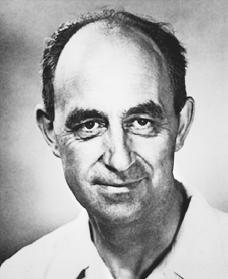
Above: Enrico Fermi. Photo from NotableBiographies
The text below can be found at:
http://www.notablebiographies.com/Du-Fi/Fermi-Enrico.html
The years between 1926 and 1938 are considered Fermi's "golden age." He accepted the chair of theoretical physics (existing in theory only) at the University of Rome in 1926 and three years later became one of the first thirty members (and only physicist) to be elected to the Royal Academy of Italy. In 1928 he married Laura Capon; they had two children.
Fermi's most famous work of this period was his 1933 theory of nuclear beta decay. In beta decay a particle (beta particle), known to be identical to an electron in that it is said to have a "negative" electric charge, is given off from the nucleus (core) of an atom. This increases the atomic number (the number of protons, or particles with "positive" electric charges, minus the number of electrons) of the nucleus by one unit. Fermi worked out a detailed theory of beta decay based on the idea that a neutron (a particle with no electric charge) in the nucleus "decays," or changes, into three particles: a proton, an electron (beta particle), and a neutrino. Actually, the neutrino (a particle without mass or electric charge) was not found in experiments until the 1950s.
Tesla Posters - Patents and
Inventions
by Dr. Ljubo Vujovic,
Secretary General, Tesla Memorial Society of New York
